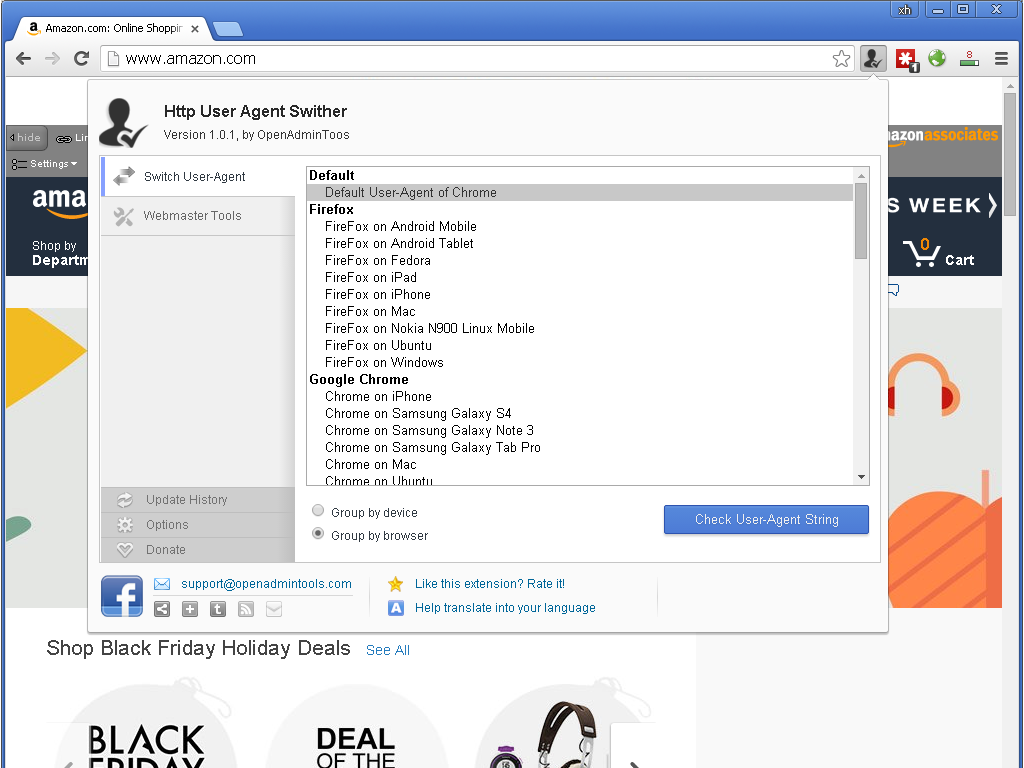Aug 04, 2017 User Agent Mac The user agent string that will change your OS to macOS when you visit a website is as follows. It differs from which browser you want the website to think you’re using on macOS.

A browser’s user agent string (UA) helps identify which browser is being used, what version, and on which operating system. When feature detection APIs are not available, use the UA to customize behavior or content to specific browser versions.
Like all other browsers,Chrome for Android sends this information in the User-AgentHTTP header every time it makes a request to any site.It’s also available in the client through JavaScript using thenavigator.userAgent call.
Chrome for Android
Chrome for Androidreports its UA in the followingformats, depending on whether the device is a phone or a tablet.
- Oct 23, 2018 The User-Agent (UA) string is contained in the HTTP headers and is intended to identify devices requesting online content. The User-Agent tells the server what the visiting device is (among many other things) and this information can be used to determine what content to return.
- Since on iPadOS User Agent in Safari is same as on MacOS Catalina, what is recommened way to distinguish OS on server side? IPadOS: Safari: Mozilla/5.0 ( Macintosh; Intel Mac OS X 1015 ) AppleWebKit/605.1.15 (KHTML, like Gecko) Version/13.0 Safari/605.1.15.
- User-Agent: MacOutlook/14.7.1.161129 (Intel Mac OS X 10.9.6) I would like to change word MacOutlook OR/AND information that I am working on Mac OS X. This thread is locked.
Phone UA:
Tablet UA:
Here’s an example of the Chrome user agent string on a Galaxy Nexus:
If you are parsing user agent strings using regular expressions, thefollowing can be used to check against Chrome on Android phones and tablets:

- Phone pattern:
'Android' + 'Chrome/[.0-9]* Mobile' - Tablet pattern:
'Android' + 'Chrome/[.0-9]* (?!Mobile)'
Chrome for iOS
The UA in Chrome for iOS is the same as the Mobile Safariuser agent, with CriOS/<ChromeRevision> instead ofVersion/<VersionNum>.

Here’s an example of the Chrome UA on iPhone:
For comparison, the Mobile Safari UA:
Up to Chrome 84, when the Request Desktop Site feature is enabled, theDesktop Safari UA is sent:Starting from Chrome 85, when the Request Desktop Site feature is enabled, theUA is the same as the Desktop Safari UA with
Desktop Safari UA withCriOS/<ChromeMajorRevision> being added:WebView on Android
User Agent Mac Os
The Android 4.4 (KitKat) Chromium-based WebView adds Chrome/_version_ to the user agent string.
Old WebView UA:
WebView UA in KitKat to Lollipop
If you’re attempting to differentiate between the WebView and Chrome for Android,you should look for the presence of the Version/_X.X_ string in the WebViewuser-agent string. Don’t rely on the specific Chrome version number(for example, 30.0.0.0) as the version numbers changes with each release.
WebView UA in Lollipop and Above

In the newer versions of WebView,you can differentiate the WebView by looking for the wv field as highlighted below.
User Agent String For Macbook Pro
